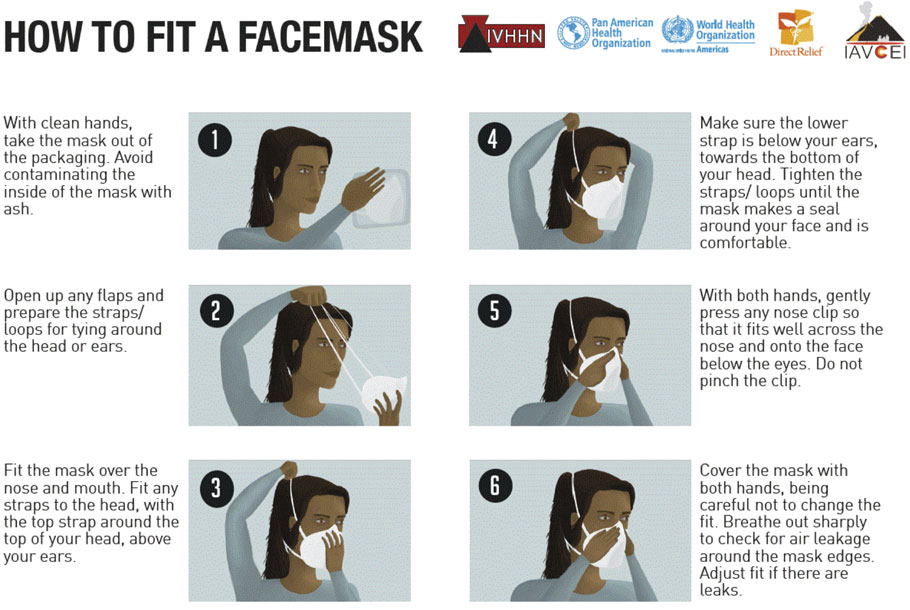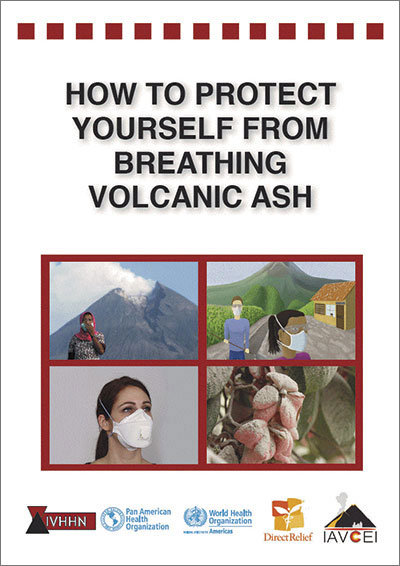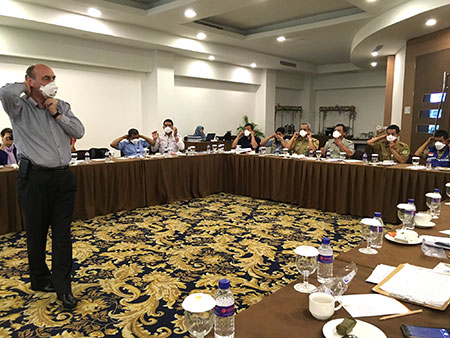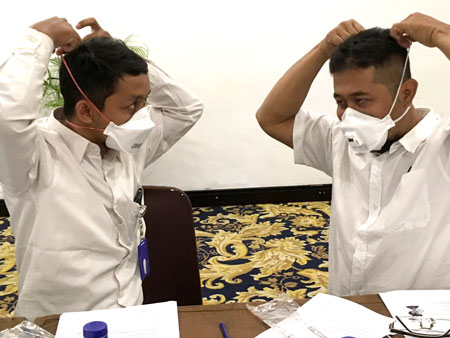
Figure 5. IVHHN/PAHO leaflet (inside panel) on how to fit a facemask, available at www.ivhhn.org
 |
|
Figure 4. Front cover of the IVHHN/PAHO |
The aim of the HIVE project was to generate an evidence base from which to develop public information on the effectiveness of respiratory protection for volcanic ash exposures.
The social research confirmed that communities have varying motivations for uptake of protective interventions in eruptions so, in order to ensure that new public information would be useful and relevant, the HIVE team worked with communities and health/hazard management agencies in Indonesia to co-design a series of informational products, in different media chosen by those communities. The co-development of the products involved workshops where we applied learning bias theories to determine which types of role models (e.g., health professionals, parents) people would most respond to in the videos and what the products would look like. Following production, an evaluation of the products’ effectiveness was also undertaken with communities.
A video and pamphlet explain, in detail, how people can protect themselves from inhaling ash, including the effectiveness of different kinds of respiratory protection (Figure 4). The information is also summarized as a poster, designed for bulletin boards within communities, schools and health clinics.
A leaflet and accompanying video explain how to fit a facemask (Figure 5). This small leaflet is intended to be handed out by humanitarian agencies during ashfall events, along with facemasks.
The HIVE team also produced a video documenting people’s experiences in protecting themselves during the 2010 eruption of Merapi volcano, Indonesia, to help people prepare for future eruptions.
All of the informational products are published on the IVHHN website (www.ivhhn.org), in multiple languages, and the printable products are endorsed by PAHO/WHO.
Additionally, the International Society for Respiratory Protection (ISRP), with the HIVE team, conducted a train-the-trainer initiative in Yogyakarta, Indonesia, on how to fit a facemask (Figure 6). Seventy-three agency representatives were trained who, in turn, have trained at least 800 people, including teachers, police, healthcare professionals, NGO and humanitarian agency staff.
 |
 |
| Figure 6. Keith Roddan (ISRP/3M) trains stakeholder reps in how to fit a facemask. The reps then trained each other so that they, in turn, were then ready to train others. Event organized by HIVE/ISRP/Red Cross (PMI Yogyakarta). | |

